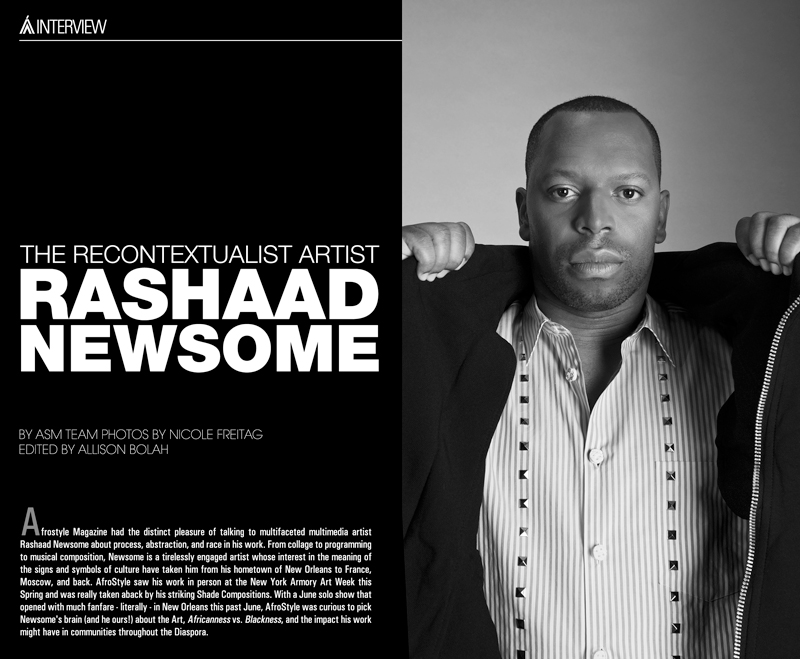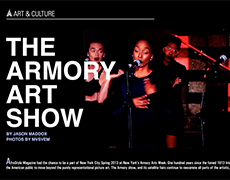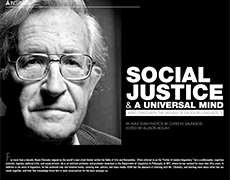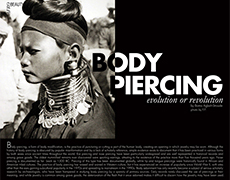Afrostyle Magazine had the distinct pleasure of talking to multifaceted multimedia artist Rashaad Newsome about process, abstraction, and race in his work. From collage to programming to musical composition, Newsome is a tirelessly engaged artist whose interest in the meaning of the signs and symbols of culture have taken him from his hometown of New Orleans to France, Moscow, and back. AfroStyle saw his work in person at the New York Armory Art Week this Spring and was really taken aback by his striking Shade Compositions. With a June solo show that opened with much fanfare - literally - in New Orleans this past June, AfroStyle was curious to pick Newsome's brain (and he ours!) about the Art, Africanness vs. Blackness, and the impact his work might have in communities throughout the Diaspora.
ASM - Generally speaking, where does your work come from? Is it reactionary? Is it the stuff of from dreams? What's your process like?
RN- It could be reactionary. Shade Composition started out in 2005 as an investigation of Black Vernacular. One thing that I was really interested in was something that I grew up with but was scrutinized as being something ghetto or something being used by people of a lower class. So that led me to do my own ethnographic research of that body language. That research eventually took me to Europe. I was living in France and working on another body of work. While I was there, I wanted to see how Black people in other landscapes dealt with that vernacular or if they even used it at all. I went to Barbes in France and cast a group of six women who were from continental Africa but were living in France for many years. Each woman was given a gesture, one of the typical gestures in the performance. What was interesting was that they weren't from America but they understood and used those gestures in similar ways if not even more exaggerated. So this eventually became a performance that did not have the technology seen in the video at the Armory. It was just sort of that each woman would perform the gesture consecutively.
When I was looked at the rehearsal footage, I noticed that there was a rhythm happening. The piece went from being a live performance piece to being a video. So I cut all the footage together to make a sonic composition but I didn't want it to become a video piece, I still wanted it to be a live art piece. I also have a background in programming, so I developed this software. At the time, the Nintendo Wii hit the market; so I employed the Wii as a sort of guitar effects peddle. I was able to hack into it and reprogram it and use it to record the sound the women were making live, loop them, and compose them live, which is essentially what I was doing in post-production but now I was able to do it in real time. This opened up a slew of possibilities in terms of the way I can structure the piece. It was developing like a chamber music piece or an orchestra. So I separated the women into instrumental music sections like string, brass, woodwind, and percussion, and created much more elaborate compositions, and then I would intervene with the Wii. As it has grown, the compositions have become more complex because I've rewritten the...
“…was able to hack into it and reprogram it and use it to record the sound the women were making live, loop them, and compose them it in real time…”
program a number of times to make the Wii function in different ways. There is a lot of twisting and bending of the sound, which I wasn't doing before. Since I first started that piece, I've traveled to different parts of the world. It's always nice to say that it started out as something very specific to African American women as the perceived starting place of this vernacular. But now I've gone on to places like Moscow. I plan on going to Israel soon. And in different places, it's always the same in that I go there; I source the people locally. Part of the casting process is also mining the gestural language of that place so the material becomes unique for the composition. They perform that choreographed sound score and then I intervene with the Wii. Each time, it's site specific and the composition's always different, and, in a lot of ways, a portrait of wherever I am. I think, overall, what I'm kind of thinking about with the piece is how this "sassy vernacular" associated with African American women as well as gay men has become this sort of open source for people to present themselves from a position of power. Yet, at the same time it's also scrutinized as being something not sophisticate or bad.
ASM - ou suggested that this is a product of research. It's really interesting to think of art as a product of ethnographic research. What did you learn culturally from producing Shade Compositions?
RN - It's still evolving, but I learned a couple of things. One thing I find is that the whole notion of something ghetto or as being used by people of the lower classes… There are quite a few 'educated' Black people who have been in the piece and they still use that vernacular, and I just realize that it's labeled, not by people in the community, it's a label that's been placed on the community. And it's very interesting; it's not until we start working that some of the people in the piece realize how they've accepted that label, accepted that gaze from someone else instead of owning their own gaze. In the casting process, I'll give someone the gesture and they'll start performing it and they're like 'Oh, my God!' They'll see themselves doing it and kind of freak out about it and critique themselves. But then they know that they do it at the same time so they're kind of conflicted about it, which I find really interesting. Through the process of making the piece, there's been a sort of liberation with some of the performers in terms of owning their own cultural identity.
ASM - Have you developed any insight in what or where these gestures may be traced back to? Do they seem a part of some sort of long-standing cultural memory? DNA memory? Race memory? Social conditioning?
RN - I feel like the piece is still in its early stages. I think it's very imperative that the work goes to the continent of Africa very soon. The gestures that I thought about using when I started the piece were ones that are specific to my childhood like snapping fingers. Some of them don't even have a sound, it's more of a gesture like rolling your eyes, talk to the hand, something like that. The origins are hard to figure out, and for me, I'm not so interested in the origins as much as I'm interested in abstracting them. They're really material for me. Essentially, the way I'm using them in the performance, they're all samples that I'm using to create a music composition live. They're like somebody creating a beat using ProTools, but I'm doing it in front of an audience in real time.
ASM - Has part of your goal been to change or re-contextualize these gestures, or are they simply source material for you to make something else?
RN - Through abstracting them, they are re-contextualized. Through repetition, they kind of loose their cultural significance. Through repetition, I'm able to divorce them from these prejudices and then they're just reduced to sound and material. Once I'm able to do that, I can take you somewhere else. They kind of extend beyond that. That's what I'm interested in doing; - which is working with material that's culturally specific to me and taking it somewhere else.
“…the piece is how this "sassy vernacular" associated with African American women… become this sort of open source for people to present themselves from a position of power…”
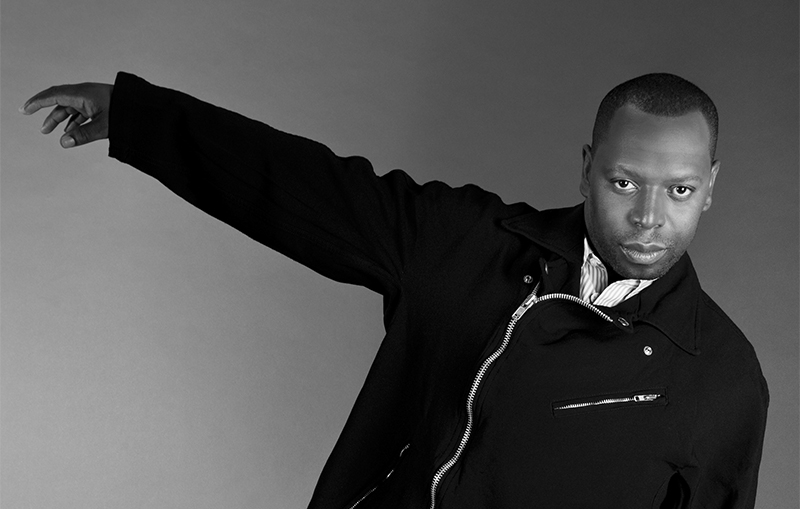
ASM: Would it be fair to say your goal in that is transcending the current cultural moment and pushing the culture forward? Or is that too grand?
RN - It's grand… I'm an artist. There're tones of things around me and I use what's around me to create something new. I'm interested in abstracting the material, and if that pushes the culture… I hope that that happens. Maybe it does, maybe it doesn't. I think that's something that, in the end, rests with the viewer. I imagine that when you go to the Armory and see rich white collectors who more than likely don't know a lot of the type people that they see in the piece, but they're there and enthralled in the composition, maybe when they get on the train somewhere else, they might look at those people a little differently.
ASM - Do you also look at how Continental Africans perceive your work?
RN - When I'm thinking about it, I think of making really strong interesting work. If I look at my audience as just Black it would limit the experience that one can have. I'm 33 years old, I'm a Black person, I'm a queer person, there's a lot of things going on in the work, and I'm an artist, so it's not limited to race. There's artists who came before me whose shoulders I'm standing on who work really hard making work so I didn't have to rely on 'the upliftment of the race'. If you ask me about a specific project… I think with Shade Compositions I would hope that people start to own their own identity and some of the things that are a part of the Diaspora, and really own them and be proud and celebrate them.
ASM - You're a very prominent identifier or touchstone for the idea of Blackness within the visual arts scene. What does Blackness mean to you? Is it connected to Africanness? Is there a Blackness, or is that simply an otherwise label that people have put on top of the community?
RN - That's so broad! I don't even know if that's a question. Blackness is me. That's all I can say. I don't really know how to answer it.
ASM - What was it that made you want to become this type of artist? When you were younger, did you say, 'I want to do this'? Did it evolve organically? I'm sure there were millions of choices out there. What made you go in this direction?
RN - There wasn't any specific moment when I decided I was going to go in that direction. I'm originally from New Orleans. I studied art history at Tulane. Then I studied film in New York. Then I studied music production. I think that my unusual journey to my practice is what makes it what it is. Working with music composition, working with programing, working with video, having an interest in history, all of these things make the practice what it is which is why it's so multifaceted. It happened really organically; it's just a product of things that I've learned, my personal history, my life experience.
“…Through abstracting them, they are re-contextualized. Through repetition, they loose their cultural significance. …I'm able to divorce them from prejudices …. Once I'm able to do that, I can take you somewhere else…”
ASM - Is there anything you'd like to say to someone who might be considering making work? Is there any sort of guidance or advice you'd put out there to a young artist?
RN - Enroll in a fine arts program at a university if they can get into it. I think it's always good to find an artist whose work you like, or to intern and assist them to help you find your own voice. I think that's a good starting point. And just be true to your vision. I think the best advice would be to get involved in creative communities, and, doing that, you'll find your own voice.
ASM - Is there anything that you're working on that you want to give a preview of?
RN - I have my solo show in my hometown, New Orleans, at the New Orleans Museum of Art. It's going to be a show of twelve new large-scale collage pieces; -half have never been shown before. The work is insertions into the French portrait gallery. There's a piece of mine that incorporates rappers Juvenile and Birdman who are local rappers. I'm really happy that they're being placed in that context because it's a museum that, at one time, Black people couldn't even go to. I'll be doing a precession from an undisclosed location to the museum. The procession will be me, my Mardi Gras crew, Mardi Gras Indians, McMain High School's band (my high school), and the community. I've been going through the process to become a king of arms and, once we storm the museum, to complete that process, I'll be knighted to become a king of arms!
